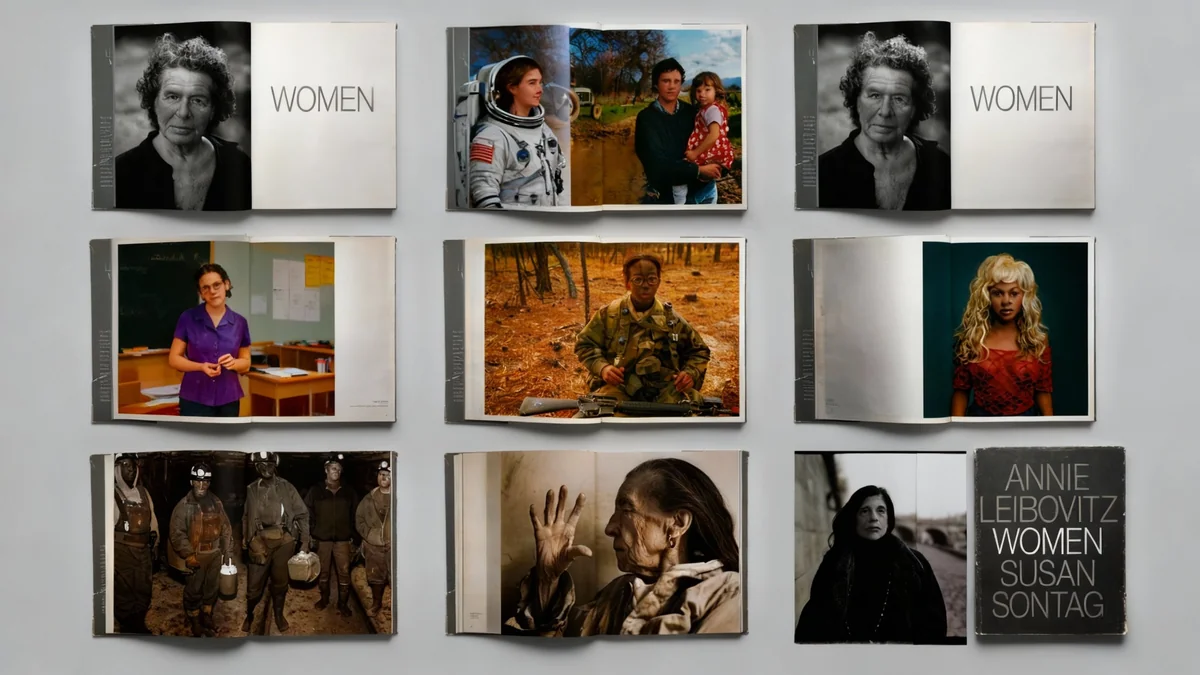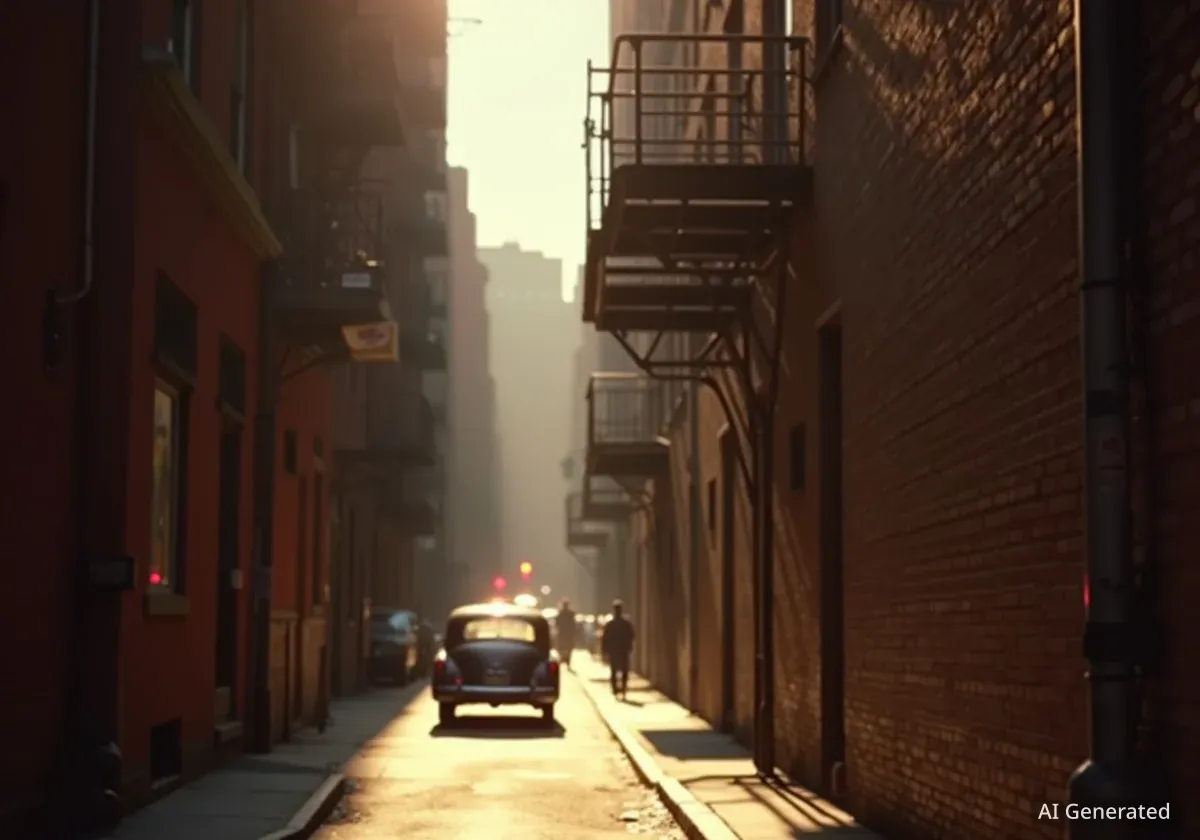Famed photographer Annie Leibovitz is set to release an expanded edition of her influential 1999 photography book, "Women," marking its 25th anniversary. The new two-volume collection, published by Phaidon, pairs the original portraits with new images captured over the past two decades, reflecting a shift in the cultural landscape and the evolving roles of women in society.
The updated work includes new essays from writer Chimamanda Ngozi Adichie and activist Gloria Steinem, offering fresh perspectives on the project's enduring relevance. It features portraits of contemporary figures such as former First Lady Michelle Obama, Supreme Court Justice Ketanji Brown Jackson, and gymnast Simone Biles, alongside the original subjects.
Key Takeaways
- A new, expanded edition of Annie Leibovitz's photography book "Women" will be released on November 4 to mark its 25th anniversary.
- The collection includes the original 1999 portraits alongside new photographs of prominent contemporary women.
- It features new introductory essays by Gloria Steinem and Chimamanda Ngozi Adichie.
- The project continues to explore the diverse roles and accomplishments of women, updating the original's premise for a modern audience.
A Landmark Project Revisited
A quarter-century after its initial publication, Annie Leibovitz's seminal work is being reintroduced with a broader scope. The original book, created in collaboration with the late writer Susan Sontag, sought to address what Sontag termed "the question of women." It presented a wide array of portraits, from coal miners and astronauts to celebrities, challenging monolithic views of womanhood.
This new edition continues that exploration. Leibovitz states in her new introduction that she focused on issues that are important today, evolving the project's original intent. The result is a collection that documents not just possibility, but tangible accomplishment across various fields.
The release coincides with an exhibition of Leibovitz's work titled "Wonderland" at the Marta Ortega Pérez Foundation in A Coruña, Spain, further cementing her legacy in contemporary photography.
New Faces, New Narratives
The updated volume introduces a new generation of influential women. The portraits feature individuals who have shaped recent history and culture, including:
- Poet Amanda Gorman
- Television producer Shonda Rhimes
- Supreme Court Justice Ketanji Brown Jackson
- Olympic swimmer Katie Ledecky
- Activist Angela Davis
- Artist Simone Leigh
- Environmentalist Winona LaDuke
These additions sit alongside powerful images of figures like author Toni Morrison and politician Hillary Clinton. According to Adichie's essay, the new images showcase "the small, exquisite heroism of women," moving beyond simple representation to capture the complexity of their lives and achievements.
The Sontag Influence
The original 1999 edition was profoundly shaped by writer and intellectual Susan Sontag, Leibovitz's partner for 15 years. In her influential introduction, Sontag argued that a book of photographs of women inevitably raises questions about their societal roles in a way a collection of men's portraits would not. "Men, unlike women, are not a work in progress," she wrote, a statement that framed the project's inquiry into female identity.
From Possibility to Accomplishment
While the first book was a statement about the vast potential and varied occupations available to women, the new work is described as a documentation of realized achievement. The photographs capture women in their element—Shonda Rhimes on a set, Justice Jackson in Washington, D.C., and athlete Simone Biles in her Texas training facility.
This shift reflects the progress made over the last 25 years. However, the contributors also acknowledge the distance still to go. As Adichie writes, "we are still very far away from the ultimate goal of feminism, which is to make itself redundant."
A Statistical Snapshot
Susan Sontag's original essay highlighted professions where women were underrepresented. Even today, progress remains uneven. According to recent data, women still make up only about a quarter of licensed architects and physicists in the United States, underscoring the continued relevance of the project's themes.
Reflections from Gloria Steinem
In her new essay, Gloria Steinem reflects on the historical context of Leibovitz's career. She recalls searching for female photographers for Ms. magazine in the 1970s and finding few women working in portraiture, a field that often required studio resources beyond their financial reach.
"We soon discovered that women could be reportage photographers recording street scenes, but not frequently portrait photographers, who required lights and a studio, necessities that were beyond their earning power," Steinem writes.
Steinem credits Leibovitz with turning her lens toward subjects often overlooked by male photographers of the era. "Annie’s attention legitimized them," she concludes, highlighting the photographer's role in validating the stories and presence of a diverse range of women.
A Continuing Dialogue
The re-release of "Women" is more than a retrospective. It serves as a cultural document, tracking a quarter-century of change, struggle, and progress. By placing portraits of figures like astronaut Eileen Collins from 1999 next to Sarah Zorn, the first female regimental commander at The Citadel military college, the book creates a powerful visual dialogue across generations.
The collection does not shy away from the complexities of this progress. It is, as the original was, a starting point for conversation. It presents a visual tapestry of female identity that is both celebratory and questioning, acknowledging how far women have come while implicitly asking what comes next.




